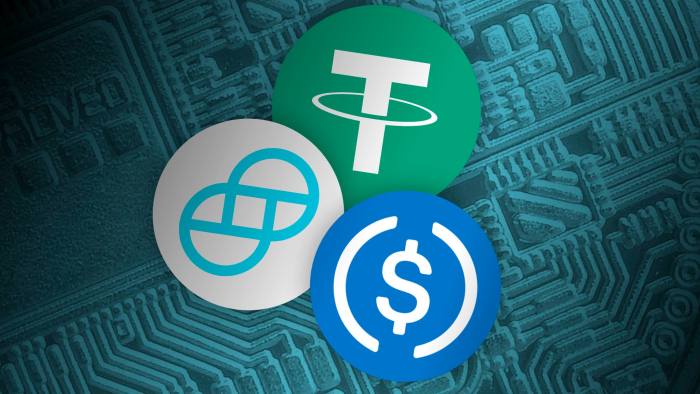All eyes are on Congress this week as the leaders of six cryptocurrency companies testify before the House Financial Services Committee on what the future of the crypto industry might look like. Legislators have already begun to ask questions about stablecoins, and what kind of regulations they might require.
Treasury Secretary Janet Yellen said last month that stablecoins were well designed and had the “potential to support beneficial payments options.” But, she also cautioned that the absence of regulation was a problem.
“Current oversight is inconsistent and fragmented, with some stablecoins effectively falling outside the regulatory perimeter,” she said.
Stablecoins are a type of cryptocurrency that derives its value from some underlying external asset, like the U.S. dollar, or the price of gold. That makes them different from cryptocurrencies like Bitcoin or Ethereum, which is tied to being “mined” by computers. And while Bitcoin and other cryptocurrencies have a reputation for being volatile, stablecoins are popular among investors and companies because of their supposed price stability.
Stablecoins are used to buy and sell other cryptocurrencies on exchanges. Currencies issued by governments, like the U.S. Dollar, can be converted to stablecoins, which are then used to buy other cryptocurrency. Never miss a story about Congress.
They’re also compelling to beginners because many exchanges don’t charge trading fees between U.S. dollars and stablecoin, but they do charge trading fees between U.S. dollars and other cryptocurrencies like Bitcoin.
There are no regulations currently in place in the U.S. to monitor stablecoin reserves. The cryptocurrency has previously had run-ins with the authorities. In February New York State Attorney General Letitia James accused Tether, the company issuing the tether stablecoin, and crypto exchange Bitfinex, with hiding “massive losses”. The companies agreed to pay a combined total of $18.5 million in fines.
Last month, federal financial regulators urged Congress to step in and properly regulate stablecoin as it becomes one of the fastest growing types of cryptocurrency. Today, more than $150 billion worth of stablecoins are up in circulation.
The current leading stablecoins include:
- Tether: One of the most popular stablecoins, tether is currently involved in half of the Bitcoin trades occurring across the world. Tether claims to be 100% backed by cash and cash equivalents.
- USD Coin, or USDC: An open-source project run by a consortium called Centre, USD coin claims to be backed by a combination of cash, Treasury bonds, commercial paper, corporate bonds and certificates of deposit with foreign banks. A large part of the stablecoin’s appeal is the ability to redeem one 1 USD coin for 1 U.S. dollar.
- Binance USD: Issued by Binance, the world’s largest crypto exchange, the Binance stablecoin also claims to be backed 1:1 in USD.
-Read original on Fortune


